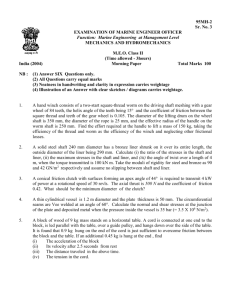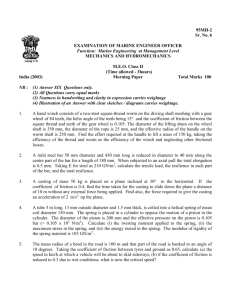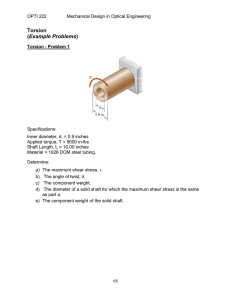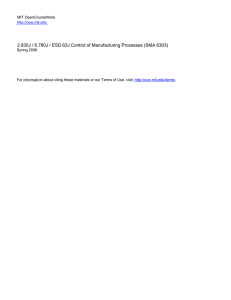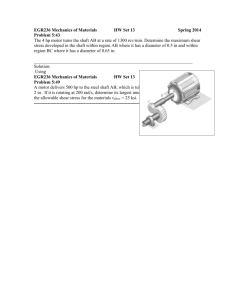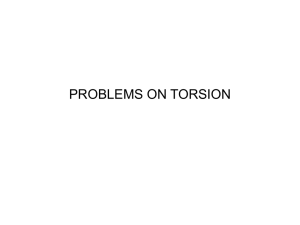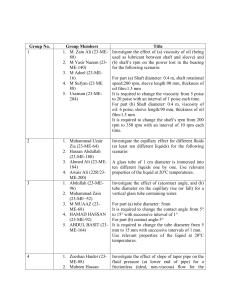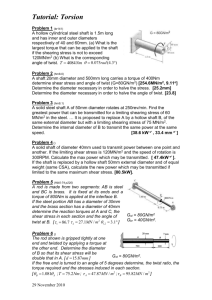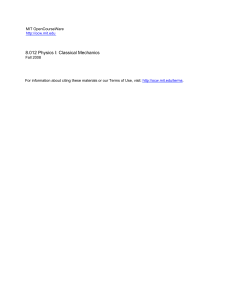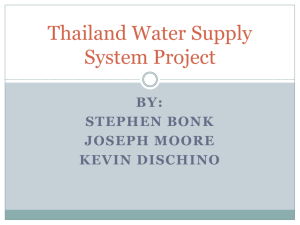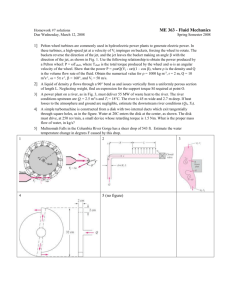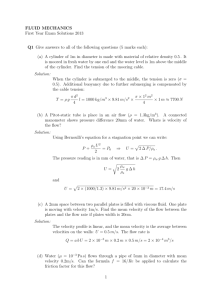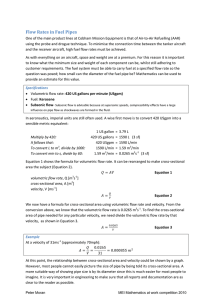July
advertisement
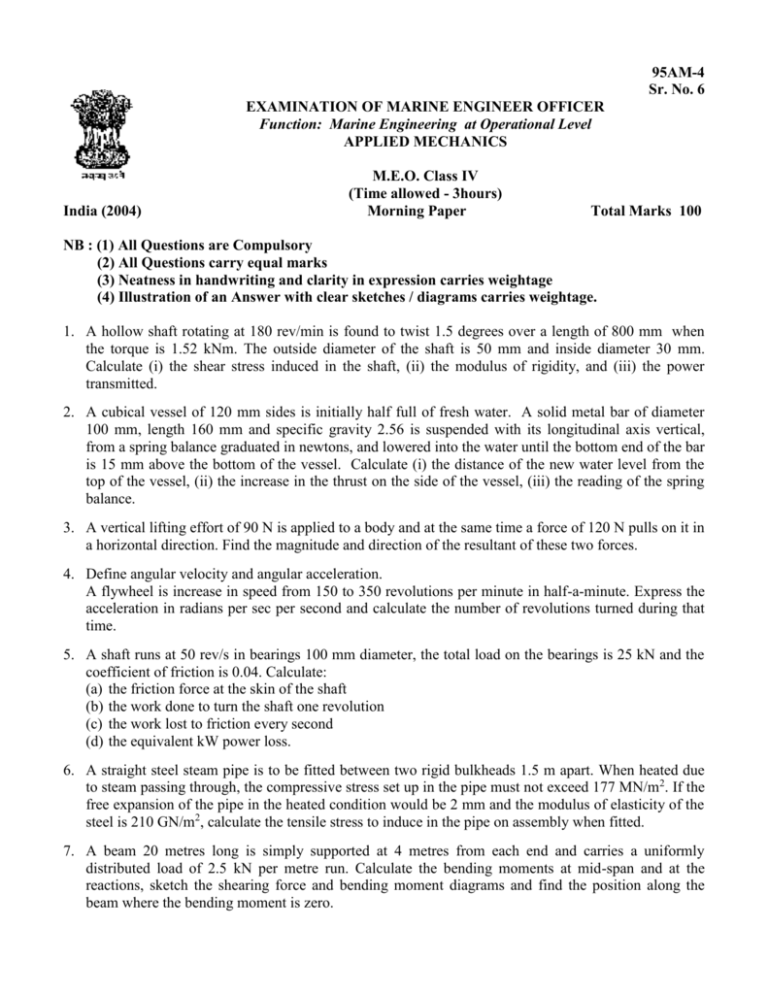
95AM-4 Sr. No. 6 EXAMINATION OF MARINE ENGINEER OFFICER Function: Marine Engineering at Operational Level APPLIED MECHANICS India (2004) M.E.O. Class IV (Time allowed - 3hours) Morning Paper Total Marks 100 NB : (1) All Questions are Compulsory (2) All Questions carry equal marks (3) Neatness in handwriting and clarity in expression carries weightage (4) Illustration of an Answer with clear sketches / diagrams carries weightage. 1. A hollow shaft rotating at 180 rev/min is found to twist 1.5 degrees over a length of 800 mm when the torque is 1.52 kNm. The outside diameter of the shaft is 50 mm and inside diameter 30 mm. Calculate (i) the shear stress induced in the shaft, (ii) the modulus of rigidity, and (iii) the power transmitted. 2. A cubical vessel of 120 mm sides is initially half full of fresh water. A solid metal bar of diameter 100 mm, length 160 mm and specific gravity 2.56 is suspended with its longitudinal axis vertical, from a spring balance graduated in newtons, and lowered into the water until the bottom end of the bar is 15 mm above the bottom of the vessel. Calculate (i) the distance of the new water level from the top of the vessel, (ii) the increase in the thrust on the side of the vessel, (iii) the reading of the spring balance. 3. A vertical lifting effort of 90 N is applied to a body and at the same time a force of 120 N pulls on it in a horizontal direction. Find the magnitude and direction of the resultant of these two forces. 4. Define angular velocity and angular acceleration. A flywheel is increase in speed from 150 to 350 revolutions per minute in half-a-minute. Express the acceleration in radians per sec per second and calculate the number of revolutions turned during that time. 5. A shaft runs at 50 rev/s in bearings 100 mm diameter, the total load on the bearings is 25 kN and the coefficient of friction is 0.04. Calculate: (a) the friction force at the skin of the shaft (b) the work done to turn the shaft one revolution (c) the work lost to friction every second (d) the equivalent kW power loss. 6. A straight steel steam pipe is to be fitted between two rigid bulkheads 1.5 m apart. When heated due to steam passing through, the compressive stress set up in the pipe must not exceed 177 MN/m2. If the free expansion of the pipe in the heated condition would be 2 mm and the modulus of elasticity of the steel is 210 GN/m2, calculate the tensile stress to induce in the pipe on assembly when fitted. 7. A beam 20 metres long is simply supported at 4 metres from each end and carries a uniformly distributed load of 2.5 kN per metre run. Calculate the bending moments at mid-span and at the reactions, sketch the shearing force and bending moment diagrams and find the position along the beam where the bending moment is zero. 8. Define coefficients of velocity, reduction of area and discharge. In an experiment the water level in atank was kept constant at 1.25 m above a hole 12 mm diameter in the side of the tank. The jet of water from the hole passed through a ring, which was 2.17 m horizontally from the side of the tank and 1m vertically below the hole. The water discharged into a tank and measured to be at the rate of 20.84 liters /min. From these results calculate the coefficients of velocity, reduction of area and discharge. 9. Find the width of a belt of 8 mm thickness required to drive a pulley 500 mm diameter at 450 rev/min and transmit 4.5 kW of power, the maximum tension in the belt is not to exceed 7N per mm of width and the tension in the tight side is to be taken as 2 ½ times the tension in the slack side. 10. Three masses, x, y and z, are to rotate in the same plane at the angular velocity. Their masses and radii from centre of rotation are, respectively 9 kg at 400 mm radius, 10 kg at 350 mm radius, and 12 kg at 250 mm radius. Calculate the angles between them so that they will balance. ----------------------------XXXXX-------------------------
